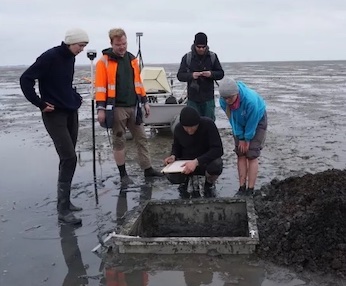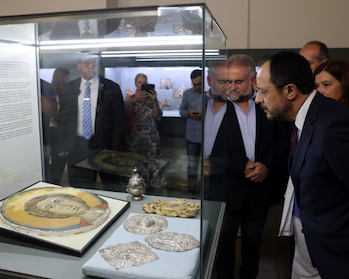Researchers have discovered the remains of a long-lost church, submerged by floodwaters almost 700 years ago.
The medieval church once formed part of the medieval trading settlement of Rungholt, which has sometimes been referred to as the “Atlantis of the North Sea.”
The exact location of Rungholt—and even its very existence—have long been the subject of debate. But now an interdisciplinary team of researchers have found evidence for a church that may have sat at the centre of the medieval settlement.
The project was a collaboration between three German organisations – Kiel University, Johannes Gutenberg University of Mainz, the Centre for Baltic and Scandinavian Archaeology and the State Archaeology Department of Schleswig-Holstein.
The survey included the area around the island of Hallig Südfall, where previous evidence has indicated Rungholt might be located.
So far, the structure is believed to be 40 metres by 15 metres in size.
“Settlement remains hidden under the mudflats are first localised and mapped over a wide area using various geophysical methods,” Dennis Wilken, a geophysicist at Kiel University, said in a statement.
This month, the team’s efforts revealed a 1.2-mile-long chain of medieval terps—artificial mounds constructed to protect urban areas from high tides and water surges—near Hallig Südfall.
Among the terps, the research team found structures that they determined to be the foundations of a large church measuring around 130 by 50 feet.
In total, the team found 54 terps, systematic drainage systems, a sea dike with a tidal gate harbor, two smaller churches and the large church.
“The find thus joins the ranks of the large churches of North Frisia,” stated Dr Bente Sven Majchczack, archaeologist in the ROOTS Cluster of Excellence at Kiel University.
The sunken settlement was reportedly submerged during a devastating storm surge in A.D. 1362. It lies just off the coast of modern-day Germany beneath the Wadden Sea—an intertidal zone in the southeastern part of the North Sea.













